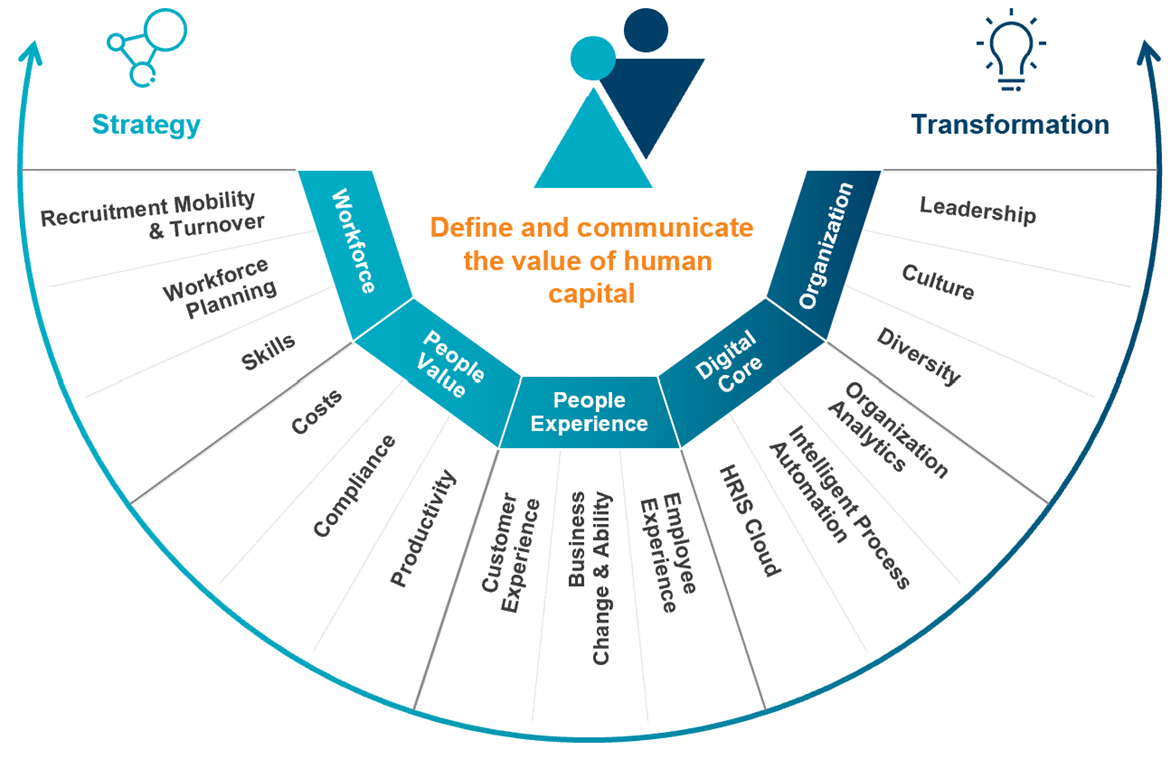Stakeholders have long believed that effective assessments of a company’s performance and prospects require solid information on workforce costs and productivity, on how employees are hired, developed and managed, and other human capital factors. Agencies, governing bodies and investors have recently exerted pressure on a number of authorities worldwide to ensure more human capital information is made available as a basis for investment decisions, including:
- In 2006, B Corp was organized to make it easier “for mission-driven companies to protect and improve their positive impact over time.” B Corp certification evaluates how companies’ operations and business models impact workers, community, environment and customers. The first 82 B Corps were certified in 2007.
- In 2013, the International Integrated Reporting Council (IIRC) developed a framework to align capital allocation and corporate behavior with sustainable development through integrated reporting and thinking.
- In 2017, World Bank Group President Jim Yong Kim introduced the Human Capital Project. “For the first time, we are including human capital in our measurement of the wealth of nations,” Dr. Kim said.
- In 2018, the Embankment Project of Inclusive Capitalism (EPIC), a coordinated global effort aimed at measuring business value over the long term, published an initial report focused on the value of human capital in November. In December, The International Organization for Standardization issued ISO 30414:2018, an extensive set of voluntary guidelines for what human capital data companies should disclose.
- In 2019, Insurance giant Allianz published its 53-page “People Fact Book 2018,” which may constitute the most extensive human capital disclosure ever made.
- In 2020, the U.S. Securities and Exchange Commission (SEC) amended their Regulation S-K to require human capital disclosures on “material” human capital metrics. The SEC’s mandate doesn’t prescribe any format or content but establishes a common approach that supports like-to-like comparisons, within and across businesses, industries and countries. Earlier this month, Protiviti’s Chris Wright and Kim Lanier wrote about how companies can articulate the relationship between workers and the company’s value in a post about the amendment.
A Reporting Framework
Protiviti has established a framework based on ISO 30414:2018, which added measurements to link employee experience to customer experience in an explicit way. Additional measurements explore how the digital element of human resources materially impacts how people are managed and monitored. These measurements are grouped into five dimensions including workforce, people value, people experience, digital core and organization. The framework helps shape reporting that’s aligned to the values and goals of the organization.
 The Positive Impacts of Measuring Human Capital
The Positive Impacts of Measuring Human Capital
Measuring, monitoring and linking human capital metrics to business outcomes says much about a business’s long-term prospects. Scrutiny of human capital metrics has resulted in intensified focus on safety in the work environment and better compliance with health and safety regulations. It has also resulted in increased emphasis on diversity, employee health, wellbeing and happiness. Metrics satisfy investors’ desire to compare and benchmark how companies gain value from their human capital. For public and private organizations alike, evaluating and reporting on investments in human capital supports stronger employee engagement and improved business results.
Whatever standard or framework a business adopts for human capital reporting, they’ll want to choose an approach that draws a direct link between human capital management and organizational impacts.
- Identify Core Metrics — Start by acknowledging that human capital reporting is iterative. An organization’s earliest reports on human capital will not and should not report on all of ISO’s eleven categories or Protiviti’s 15 dimensions. While there may be a set of human capital metrics that every retailer, every bank or every hospital could follow, there never will be a one-size-fits-all approach to human capital reporting. Leaders will want to link metrics to their organizations’ strategies. Use this conversation to align leadership across the organization.
- Align to Business Conditions — Consider pain points the organization is experiencing today, and how the organization envisions human capital’s contributions to business outcomes. Diversity, employee engagement, wellbeing and labor turnover are significant to many organizations at present.
- Engage Leaders Throughout the Organization — Any human capital measurement approach should be monitored, managed and owned by appropriate leaders up, down and across the company. The crucial work of reporting on how the organization utilizes the knowledge, skills and abilities of individuals is a key representation of effective management.
- Evolve Over Time — As the organization experiences success — sees numbers like turnover, absenteeism, or schedule adherence improve — expand and refine human capital reporting. At the same time, continue to mature governance processes surrounding human capital data. Allow early successes to spur further efforts. What other metrics are important to shift? Engage managers to select among the many possible measures and calculations, but don’t make a project of addressing all of them. Instead, select the right measurements for your business.
Whether a business is private or public, all leaders benefit from understanding the contribution of human capital to long-term organizational success. To learn more about identifying goals and metrics and to determine critical factors for internal and external reporting, join us for two upcoming webinars. We’ll discuss SEC requirements and practical steps to bring public companies into compliance with human capital reporting requirements — and to bring private companies into the community of businesses benefitting from the rewards of human capital measurement.
David Simmonds is the chairman of HCM Metrics and the first individual to receive a professional certification for ISO 30414 Human Capital Management reporting. David is a Chartered Fellow of the U.K.’s CIPD (Chartered Institute of Personnel and Development), and holds certifications from the Institute of Sales and Marketing Management; the Institute of Training and Occupational Learning; and the Higher Education Academy.



Add comment